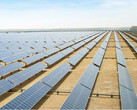Researchers at the Australian National University recently conducted a study to determine the number of potential locations for pumped storage power plants. In doing so, they ultimately concluded that a massive 86 trillion kilowatt hours could be stored with all the power plants that could be built and fed back into the power grid when needed.
To put this into perspective, global electricity production from all sources, from coal to solar panels, currently amounts to 30 trillion kilowatt hours or 30 petawatt hours. Hence, 86 trillion kilowatt hours would still suffice if global electricity demand were to double or triple as a result of the electrification of transportation, increased industrial production and/or heat generation
The locations of the storage power plants have been compiled in an interactive atlas. There you can filter by size and type of pumped storage power plant.
Lots of advantages and a significant disadvantage
The researchers also highlight the numerous advantages of pumped storage power plants. For example, existing river landscapes would not be harmed or destroyed. They can be built anywhere where there is a sufficient difference in height. The water requirement is significantly lower than for a dam and the turbines used are less polluted due to the lower proportion of sediment.
On the other hand, seawater could also be used at many potential locations. This spares the effort of having to build a second reservoir and water consumption is practically non-existent. In addition, the predicted service life of such a plant is 60 to 100 years.
Furthermore, the costs, which vary greatly between different regions and the respective types of pumped storage plants, are said to be around $1 billion per gigawatt of capacity, which is not much more than current wind and solar power plants.
There is only one disadvantage: these plants cannot generate electricity, but can only store it. They do so very well since the energy can be stored for up to half a year, with a typical efficiency of 80%.
Wind and solar around the clock
So, the electricity itself must come from other sources. The researchers basically have two sources in mind here, namely wind and solar energy. The fact that their expansion is still slow is due to irregular production, lack of government subsidies and lack of storage options.
In any case, as it turns out, suitable electricity storage systems are possible almost everywhere and, above all, on the right scale, even if they still have to be built. However, there is still a long way to go before that happens. Only a handful of pumped storage power plants currently have an output of 1 gigawatt.
















